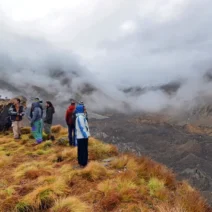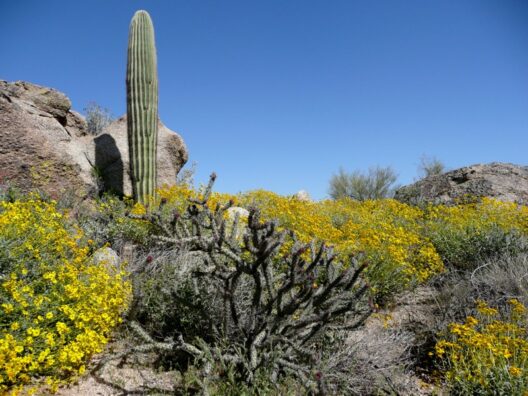Global warming is an issue at the forefront of environmental discourse, captivating not only scientists but also a broader audience intrigued by its implications. The phenomenon is characterized by the gradual increase in Earth’s average temperature, primarily attributed to anthropogenic activities. In this guide, we will unravel the intricacies of global warming, examining its causes, indicators, consequences, and potential solutions.
Understanding the Greenhouse Effect
At the core of global warming lies the greenhouse effect, a natural process that warms the Earth’s surface. Solar radiation enters the Earth’s atmosphere and is absorbed by the planet’s surface, subsequently being re-radiated as heat. Greenhouse gases (GHGs)—such as carbon dioxide (CO2), methane (CH4), and nitrous oxide (N2O)—trap some of this heat within the atmosphere, preventing it from escaping into space. This process is essential for maintaining temperatures conducive to life. However, human activities have led to the augmentation of these gases, exacerbating the greenhouse effect.
Causes: Anthropogenic Contributions
The primary driver of global warming is the combustion of fossil fuels, which releases significant quantities of CO2 into the atmosphere. Vehicles, industrial processes, and power generation predominantly utilize coal, oil, and natural gas. Deforestation also plays a crucial role, as trees that sequester carbon are removed, leaving more CO2 in the atmosphere. Agriculture contributes through methane emissions generated by livestock and rice paddies, and nitrous oxide released from fertilized soils. The cumulative effect of these activities leads to an alarming increase in GHG concentrations.
Indicators of Global Warming
Various indicators signal the ongoing phenomenon of global warming. Anomalous temperature records show a significant rise in global average temperatures. Consequently, glacial retreat and melting polar ice caps illuminate the stark realities of climate change. Moreover, the frequency and intensity of extreme weather events—including hurricanes, droughts, and heatwaves—have proliferated. Oceanic warming, another critical indicator, results in coral bleaching and shifts in marine biodiversity, further affirming the effects of global warming.
Consequences: A Multi-faceted Crisis
The ramifications of global warming are extensive and interconnected. Ecological ramifications are perhaps the most alarming; species extinction rates are accelerating as habitats undergo radical transformations. Additionally, global warming threatens food security through altered agricultural patterns and increased pests and diseases, compromising crop yields. The socio-economic implications are equally precarious, with vulnerable populations bearing the brunt of climatic shifts, exacerbating existing inequalities. Rising sea levels threaten coastal communities, displacing millions and leading to geopolitical tensions.
Feedback Loops: The Compounding Dilemma
Global warming is exacerbated by feedback loops that perpetuate and intensify its effects. For instance, as Arctic ice melts, darker ocean water is exposed, leading to increased heat absorption and further warming. Similarly, thawing permafrost releases methane, a potent greenhouse gas, thereby intensifying atmospheric warming. These feedback mechanisms pose substantial challenges in addressing climate change, given their cyclical nature that can lead to irreversible changes if not mitigated.
Mitigation Strategies: Confronting the Challenge
Addressing global warming requires coordinated efforts across multiple sectors. Transitioning to renewable energy sources, such as wind, solar, and hydropower, can significantly curtail GHG emissions. Enhancing energy efficiency in buildings, transportation, and industrial sectors is paramount. Reforestation and conservation initiatives can restore carbon sinks, while innovative agricultural practices can reduce methane and nitrous oxide emissions. Additionally, advancing carbon capture and storage technology can play a critical role in managing atmospheric CO2 levels.
International Cooperation: Collective Action
Global warming transcends national borders, necessitating international cooperation. Agreements like the Paris Accord exemplify concerted efforts to limit global temperature increases. Countries are urged to pledge emissions reductions and bolster resilience against climate impacts. However, moving from commitment to action requires rigorous evaluation and accountability, fostering a culture of responsibility among nations.
Individual Actions: The Collective Impact
While systemic changes are essential, individual actions also contribute significantly to mitigating global warming. Reducing energy consumption, minimizing waste, adopting sustainable transportation methods, and supporting eco-friendly products can collectively lead to substantial emissions reductions. Additionally, engaging in advocacy and education can raise awareness and drive community-led initiatives, promoting a cultural shift toward sustainability.
Conclusion: The Imperative to Act
The phenomena of global warming do not exist in an abstract realm; they manifest in our daily lives and influence the future of our planet. It is incumbent upon all stakeholders—governments, corporations, and individuals—to engage actively in combating climate change. The interconnectedness of our actions underscores the need for a unified approach to forge a sustainable future. Ultimately, as we ponder the intricacies of our warming planet, let it ignite within us an unwavering commitment to protect and preserve the delicate balance of Earth’s ecosystems for generations to come.







